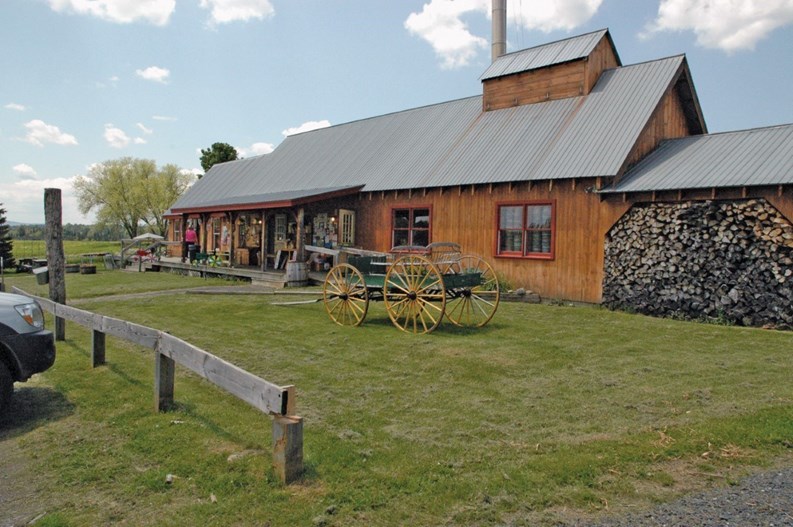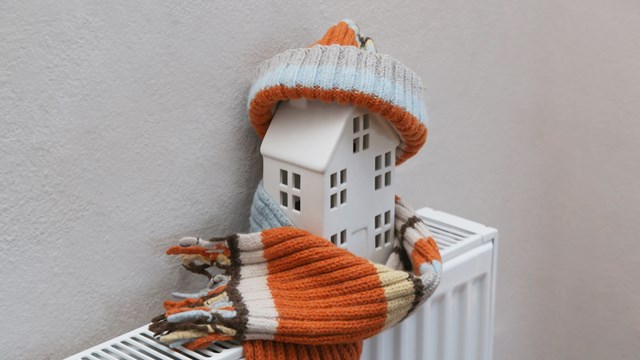Montpelier, Vermont is not a big place. In fact, residents proudly explain that it is the smallest capital city in the United States. They will also patiently point out that, although only a couple hours from French-speaking Quebec, the name of their town is pronounced Mont-peel-yer. Just a few miles away, the twin city of Barre (pronounced “Barry”) is the working class adjunct to the white-collar, legislative Montpelier. These two cities are the center of Washington County and the center of “Central Vermont.”
From Frontier to Capital
Occupied primarily by native Americans for decades longer than most of New England, Montpelier was not settled by Europeans until it was chartered by the Vermont General Assembly in 1781. It was named for a city in the Languedoc region of France, to show appreciation for France’s role in the American Revolution.
Soon after its founding, Montpelier was chosen as Vermont’s capital for its neutrality and its centrality. Politically neutral in the power struggles between established towns in the eastern part of the state and the western part of the state, Montpelier provided a compromise location. Montpelier was also strategically located in the middle of a web of roads that spread throughout the state. Right off Interstate 89 and intersected by Vermont Route 12, U.S. Route 2 and U.S. Route 302, the city today remains conveniently connected to northern, southern and central Vermont. While feeling like a world away, this small city nestled in the mountain ranges of Vermont is less than three hours from Montreal and only three hours from Boston.
According to the Montpelier master plan, the city had only 113 residents when Vermont achieved statehood in 1791. By the time it was named the capital in 1805, it had 1,200. The town swiftly switched from an agrarian and trade economy to the business of government.
A state house was quickly erected in 1808 and then replaced with an elegant granite building in 1836. After being destroyed by a fire in 1857, the capitol building was rebuilt in the same formal style, but larger. The gold leaf dome and imposing Greek Revival style make for a rather grand exterior.
But on the inside, the capitol reflects the practical, hardy side of Vermont. It is the only state house in the country heated by wood. Visitors are welcome to tour the unpretentious halls, galleries and chambers. The Legislature is in session from January to June and true to the deep-rooted democratic ideals of the state, representatives tend to be ordinary citizens without special offices, staff or vehicles.
As it has for two hundred years, government still drives the economy of modern Montpelier and draws employees from throughout the region. While the official population of the city is around 8,000 people, the population swells to approximately20,000 during the work week, according to the Central Vermont Economic Development Corporation.
Statistics from the Vermont Department of Employment and Training show that almost 30% of the workforce works in government, 24% for the service industry and 18% in fire, insurance and real estate. The bulk of the fire, insurance and real estate industry is employed by the largest of the insurance companies in the area, National Life.
Founded in 1848, National Life Insurance Company looms large over Montpelier physically as well as economically. The National Life Home Office Building overlooks the capitol and its impressive exterior is built from a single block of granite from nearby Barre.
Make the drive up to the huge office building and you will be rewarded with a fantastic view of the city. While there, peek in at the impressive mural in the lobby. Fifty feet long and eight feet high, the mural, painted by the artist Paul Sample in 1960, is a pictorial history of Vermont.
An important recent addition to the gastronomic as well as economic welfare of the town is the New England Culinary Institute (NECI). Founded in 1980, the school has grown from a handful of students and a few teachers to a nationally respected institution with more than500 students and 80 faculty members. The school offers programs in culinary arts, baking, and hospitality and restaurant management.
Several restaurants in Montpelier feature NECI students and graduates in the kitchen. The Institute’s impact on the culinary scene, however, spreads well beyond these kitchens. Along with Vermont’s renewed zeal for local and organic ingredients, most agree that NECI has helped lift the overall quality of dining throughout the state.
The Great Outdoors
The topography around Montpelier is stunning. Stretched out along the banks of the Winooski and the North Branch Rivers, steep hills rise up around the cityto create a forested backdrop.
Directly behind the State House, paths lead up the hills into the 185-acre Hubbard Park. The park, created in 1899with a large land donation from John E. Hubbard, provides miles of cleared paths for walking, biking, snowshoeing and cross-country skiing. North Branch Park offers additional trails on its 193 acres and Montpelier is planning a new series of cross-country ski trails that will circle the city.
Downhill skiing is readily available at numerous resort areas within easy driving distance of Montpelier. And if you come to Montpelier, you really should consider bringing skis, snowshoes or a shovel. The city receives almost nine feet of snow a year and can have measurable levels of snow in every month except June, July, and August.
This is not a negative to the people of Montpelier, who can be seen outdoors all seasons of the year. In additional to snow activities, residents regularly kayak and canoe down the Winooski and hike the hills around the city. Hubbard Park, in addition to trails, has a nature center, soccer and baseball fields, a pond, and an observation tower. The 54-foot tall tower offers a view from the highest point in the city.
Unfortunately, the lowest level in the city can be found right in the heart of downtown. Montpelier is built of the banks of the Winooski, a narrow stretch of flat land that was once marvelous farmland – thanks to the fertilizing effect of repeated flooding. Unfortunately, the flood plain has not been as kind to the city and its residents. Montpelier has flooded repeatedly since its founding. The most severe of these was the flood of 1927, when more than 50 people died and the water was over 12 feet deep in the center of town. Engineering has helped slow the frequency and severity of floods, but even within the past 20 years, people have been spotted in boats on Main Street.
Demand for Housing
The stubborn refusal of the people of Vermont to move the State Capital to higher ground has not only left the city prone to flooding, but short of flat land for expansion. The steep granite hills that surround the city are particularly unfriendly to building.
This is one reason there has been a chronic housing shortage in the past ten years according to Tim Heney, a lifelong resident and local realtor with Heney Real Estate. According to Steve Twombly, Montpelier’s assessor, the town has a total of 2,042 single-family properties and 382 condominiums.
Heney explains that inventory of properties for sale has been very tight; last year there were only approximately 70 residential properties sold, about one-third of which were condominiums. This is down slightly from previous years, when annual sales were closer to a hundred.
Demand for housing has outpaced housing supply for years, confirms George Malek, executive director of the Central Vermont Chamber of Commerce. “The rate of growth of demand is slowing,” he explains, “but it has not collapsed or declined yet.”
The gap between supply and demand has helped push prices up. The chamber lists the average single family home pricein Montpelier in 2000 as $105,380, in 2005 as $181,600 and $222,613 by 2006. Malek further explains that housing prices have risen faster than taxes, faster than the cost of health care, faster than the rate of inflation.
Early sales this year appear to support the statement that prices remain relatively high. The state of Vermont transfer records show 10 property sales in Montpelier in January of 2009. Of these, seven were single family homes, with an average price of $243,000 and median price of $230,000, and three condominiums with an average price of $295,500 and median price of $240,000.
In regard to the current market, Twombly adds, “I can tell you that property values here are holding fairly steady; we’ve seen a decline in sales, but aren’t seeing any significant declines in prices paid so far. We’ll see what the future brings.”
According to Realtor.com, as of mid-October this year there were 123 properties for sale in Montpelier and its immediately surrounding towns. One hundred and six of these are single family homes, which range from $1.2 million for a four-bedroom four-bath 4,582 square foot home near the statehouse to $72,000 for a two-bedroom one bath 1,040 square foot home on Hill Street. There are 17 condos listed, ranging from a $480,000 2,000-square foot three-bedroom, three-bathroom free-standing condominium to a $129,000 two-bedroom, two-bath 1,064-square-foot condo.
Many of the condominiums in Montpelier are in large older homes that have been divided, some are in converted apartments, and some are in larger units. Heney clarifies that four- to eight-unit buildings are generally as large as condominium structures get in Montpelier.
For a town with a tiny population built on a flood plain and subject to nine feet of snow a year, Montpelier is a very popular place. Residents love the fine dining, the numerous bookstores and independent shops, the quality of life and the cultural events (including an annual “rotten sneaker” contest and Vermont dairy celebration).
The nation’s smallest capital has a population that hasn’t grown in one hundred years. But the 8,000 people who live in this charming small city surrounded by the rugged beauty of central Vermont feel fortunate to call it home.
Sarah Sanford is a freelance writer and a frequent contributor to New England Condominium magazine.







Leave a Comment